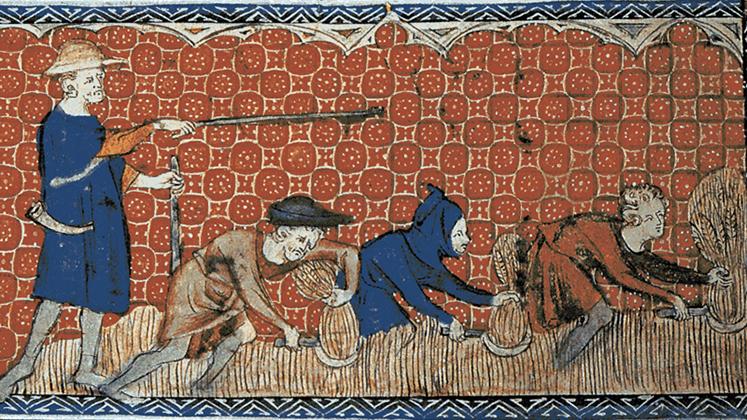What kinds of economic conditions lead to strikes? Lina Lin examined 1930s Shanghai and found that unrest among workers increased as the economy improved and prices were pushed up. Strikes also paid off more often for workers in good times, winning them higher wages.
Do changing economic conditions lead directly to increased unrest among workers? Some researchers believe the incidence of strikes is a purely random phenomena and the business cycle is irrelevant (Ashenfelter & Johnson 1969). Others argue that strikes are either pro- or countercyclical. For example, Devereux and Hart found that the duration of strikes was countercyclical for both pay and non-pay related strikes (Devereux & Hart 2010). I contribute to the debate by uncovering a pro-cyclical relationship between economic conditions and labour unrest in Shanghai during 1930-36. As economic conditions improved in the city, labour unrest increased, as did labour bargaining power.
The 1930s was a transitional moment in Chinese labour history. In 1932, the First Battle of Shanghai led to the decline of manufacturing and business. Due to the war and depression, workers and employers were struggling with economic turbulence. Towards the middle of the decade, the economy started to recover. Prices rose, the political environment stabilized, and fiscal management improved. But unrest among workers worsened.

The cost-of-living in Shanghai and the number of strikes were highly positively correlated between 1930 and 1936. Figure 1 plots this relationship, which has a Pearson Correlation Coefficient (R) of 0.91. The relationship that is visible here is consistent with standard wage theory. Prices tend to increase when the economy grows. Increasing prices represent an increased cost of living. Employers, reluctant to choke the nascent business recovery, refrain from increasing wages which represent a large proportion of overall costs. If wages stay the same, workers’ purchasing power declines. Falling real incomes increase the likelihood of workers demanding higher wages through strike action.

To analyze this, I drew upon Shanghai Labour Statistics 1930-1937 that were collected and written by the China Branch of the International Labour Office in 1938. I also read the Minutes of the Shanghai Municipal Council (SMC) for 1930-1937. These contain rich and untapped descriptions of the labour movement that tell us why workers started striking and how mediation operated between employers and employees, showing the bargaining process in unprecedented detail.
The published Shanghai Labour Statistics allow us to move beyond correlations and investigate the causes of labour unrest directly. They report the causes of strikes in 1933 and 1936, identifying five reasons: wages, working hours, unemployment, welfare and ‘others’. Between 1933 and 1936, as the economy recovered, the proportion of strikes that were motivated by wages rose from 49% to 60%. This supports my interpretation of the correlation between the number of strikes and economic conditions: workers facing lower real incomes were using strikes to fight for higher real wages.
How successful were strikes in Shanghai? The sources contain enough information on strike outcome to categorise the strikes into three types: deals where workers’ demands were all accepted, deals where their demands were partially accepted, and deals where workers’ demands were rejected. Figure 2 shows the proportion of agreements for which all the workers’ demands were accepted grew from 30% in 1933 to 44% three years later. Their increasing success indicates an increase in labour bargaining power. As economic conditions improve, employers became more amenable to workers’ demands.

Source: International Labour Office, China Brunch, Book ID 11: “Labour Statistics in Shanghai 1930-1937”, 1938. P20
Note: Three categories included: worker’s requirements all accepted; worker’s requirement partially accepted; worker’s requirement rejected. Each category is presented as a percentage, showing the change in labour bargaining power.
Why did employers give in more often as conditions improved? There are two reasons listed in the minutes of SMC for why workers had stronger bargaining power as economic conditions changed. Firstly, employers worried that strikes in one factory would stimulate strikes in other factories. To stop disputes spreading, employers were more amenable to demands. Secondly, as economic conditions improved, employers accepted workers’ demands because they did not want to interrupt production.
A pro-cyclical pattern linked economic conditions and labour unrest in Shanghai during 1930-36. Economic factors were a significant, though by no means an exclusive or even a preponderant, determinant of the number of strikes. The political environment, policies and law also mattered in labour unrest. This complex causation may explain why some studies find pro- and others find contra-cyclical correlations.
References:
Ashenfelter, Orley, and Johnson, George E. “Bargaining Theory, Trade Unions, and Industrial Strike Activity”, The American Economic Review 59, no. 1 (1969): 35-49.
Devereux, Paul J, and Hart, Robert A. “A Good Time to Stay Out? Strikes and the Business Cycle”, British Journal of Industrial Relations, 49. (2010): 70-92.


